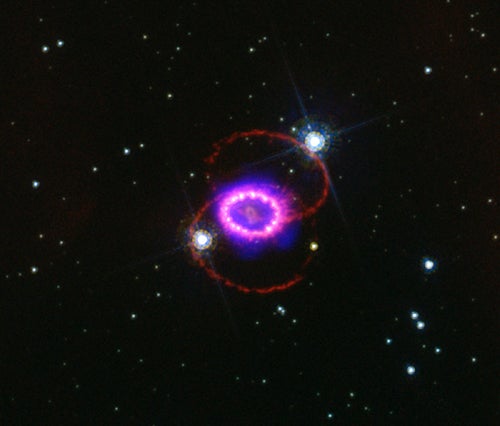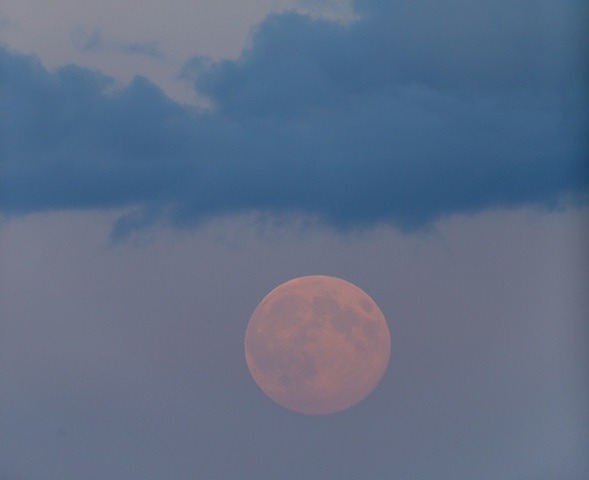Astronomers using the Chandra X-ray Observatory report the predicted brightening of SN 1987A’s ring has begun. They observed a ring of hot gas glowing in X rays at the same location as the ultraviolet ring and optical hotspots imaged previously by the Hubble Space Telescope.
SN 1987A, prior to its 1987 explosion, was a blue giant star 20 times the Sun’s mass. The star, Sanduleak –69° 202 (SK –69) is roughly 160,000 light-years from Earth, in the Large Magellanic Cloud. Because of its massive size, SK –69 lived only about 10 million years. In SK –69’s final million years, it slowly shed its outer layers as a gas cloud. A high-speed wind followed, creating a cavity in the gas. Where they interacted, dense pillars of gas formed, protruding into the cavity.
When the star exploded as a supernova — bright enough to be visible to the naked eye — it sent out a flash of ultraviolet (UV) radiation, which collided with the gas-cloud debris. A ring glowing in UV surrounds SK –69. After the star went supernova, it sent a shock wave barreling through space.
Astronomers have waited for the shock wave to collide violently with the edge of the cavity. The first optical hotspots appeared in 1995, and the number has gradually increased. Now, overlapping the UV ring is what looks like a string of pearls. These hotspots occur where the shock wave has collided with the dense pillars of cool gas.
The shock-wave collision has produced an increase in X rays. The multimillion-degree gas glows brightly where the fronts meet. Astronomers expect the gas will continue to brighten as the shock wave pounds into the gas.










